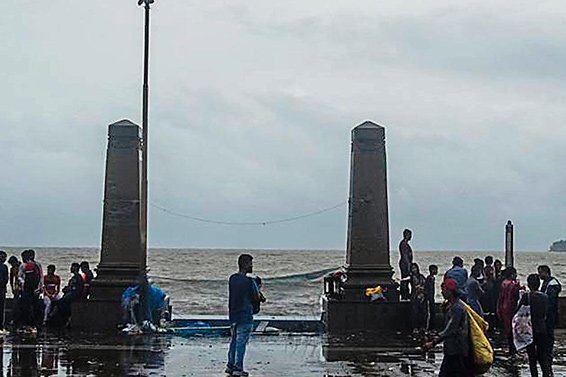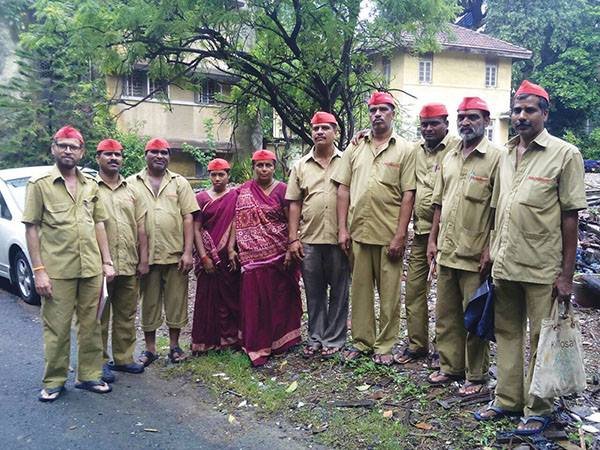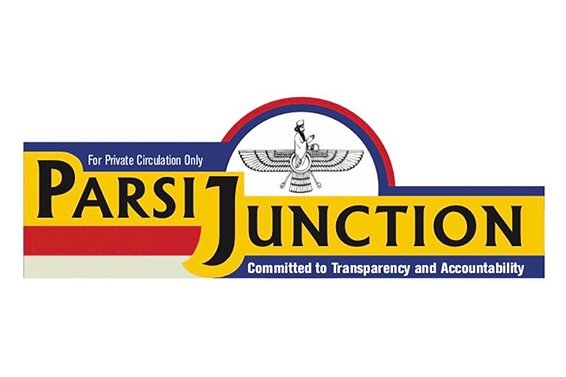With Parsi Gate in coastal road route, community worried about relocation
Members of the community gather at Parsi Gate, a 19th-century structure, during Avaroz, the day observed by Parsis in March of every year to venerate water. One community member has already written to the civic authorities, seeking details of the project under the Right to Information (RTI) Act.
Over the next few months, authorities working on the coastal road project will come up against Parsi Gate, a site of worship for the community located on Marine Drive. Even as civic officials said they are yet to take a call on whether the Gate would be relocated or if the road would go around the heritage structure, members of the community have expressed concerns over “another structure of religious significance being affected due to development”.
Members of the community gather at Parsi Gate, a 19th-century structure, during Avaroz, the day observed by Parsis in March of every year to venerate water. One community member has already written to the civic authorities, seeking details of the project under the Right to Information (RTI) Act. “It is a heritage structure and people have been praying there for more than 100 years now. It’s not like we are against development, but here under the guise of development religious sentiments are being affected. It is directly affecting freedom of religion, which is a fundamental right,” said Rayomand Zaiwala, advocate.
However, when a senior BMC official involved in the project was contacted, he confirmed the project route covered the place where Parsi Gate is located, but refused to give more details about whether the gate would be relocated. “Only once the project develops will we see what would be done around the Parsi Gate. As of now, I cannot comment about relocation of the structure or what kind of work would be carried out there,” said the official.
The Gate is not the only Zoroastrian religious site affected by new infrastructure projects. Last year, the community had approached the Supreme Court against the tunneling and construction work for Metro-3 (Colaba-Bandra-SEEPZ), which would pass underneath two Atash Behrams at Kalbadevi. Following this, the Mumbai Metro Rail Corporation Limited (MMRCL) submitted an affidavit suggesting a station box near Wadiaji Atash Behram, which houses a 188-year-old grade one fire, will be shifted away from the fire temple. Metro tunnels have now been dug below both the Atash Behrams.
While the petitioners were happy their case was considered, some had even then expressed concern that the ‘Kasp’, which the community believes is a magnetic field which connects the fire with the earth, was broken.
“Our community has been instrumental in building the city, most of the oldest structures here were built by our members. Now when the city has major infrastructure projects coming up, our sentiments and religious practices are not being taken into consideration just because we are a minority community,” said Viraf Kapadia, trustee, Bhikha Behram well, a 293-year old grade-1 heritage structure. Around two years ago, trustees of the well had repeatedly written to the MMRCL to ensure the well water is not affected due to metro construction. Six years ago, the trustees had fought a legal battle in the Bombay high court (HC) to demolish a toilet, built close to the religious structure near Cross Maidan. In April 2013, then chief justice of Bombay HC Mohit Shah and justice MS Sanklecha asked BMC to demolish the toilet and a health centre built by the Rotary Club of Bombay Sunrise in 1997.
However, some members of the community said there was no record or history linking Parsi Gate to the community, and that the “only significance” that the heritage structure has is that people go there to pray on Avaroz.
“It isn’t like the community is being targeted. It is a normal course of development which the city is going through as a part of which some Parsi structures are affected,” said Jehangir Patel, editor, Parsiana magazine.





